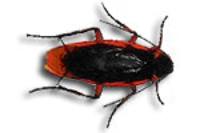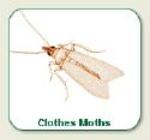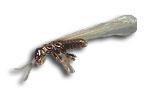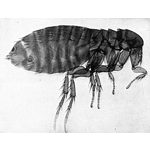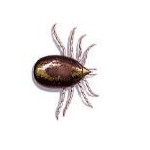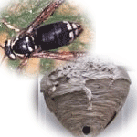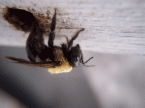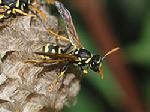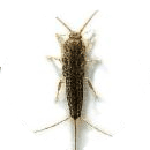All About Bed Bugs
You know the old saying, Good night, sleep tight, don't let the bed bugs bite! This childhood rhyme shines bed bugs in a whimsical light, but they are actually a serious problem in many homes, apartment buildings, hotels, dorms and other dwellings. Learn more about bed bugs so you can identify whether you have an infestation and remedy the problem quickly.
What Are Bed Bugs?
These small, wingless insects are about the size of a poppy seed when newly hatched. Adults grow to about one-quarter-inch long. They are flat and oval shaped, ranging in color from nearly white to deep brown.
Bed bugs are little vampires, feeding solely on the blood of their victims. This can cause the insect's body to swell and turn red or black. The feeding process is painless for the host, which is why bed bugs get away with it at night while the host sleeps. The bites resemble those left by fleas and mosquitoes and the tiny amount of saliva deposited into the skin during feeding may cause allergic reactions, especially in sensitive individuals. Despite this, bed bugs are not known to transmit any infectious diseases.
Where Are Bed Bugs Found?
Adult bed bugs, nymphs, and molted skin on furniture
These insects can be found worldwide. Their populations dwindled at the end of the 1990s but have resurged in recent years, especially in North America, Europe and Australia.
Some bed bugs have evolved into nest parasites, occupying bird nests and bat roosts until their victims return home. Others thrive in human nests,�or beds, which is where the insect's name comes from. This is where bed bugs can be found in greatest abundance since they usually feed at night, but they are known to venture out if they become hungry during the day.
Their tiny size and flat bodies allow bed bugs to hide in the smallest cracks and crevices, helping them remain undetected. Favorite hiding spots include folds in the bedding, between the mattress and box spring, and inside the bed frame. Knickknacks around the room provide additional hiding places and make it more difficult to eradicate an established bed bug infestation.
How Do Bed Bugs Invade Your Home?
A common way for bed bug infestations to begin is when the insects stow away in your luggage, furniture, clothing, pillows and boxes when you go on vacation or move to a new home. Used furniture, especially mattresses and bed frames, could also potentially harbor bed bugs and their eggs.
Because they can survive for months between feedings, it's not uncommon for a vacant, clean home or apartment to have a residual bed bug infestation. The tiny insects can also wander between adjoining apartments through holes in the walls for wiring and plumbing, meaning an originally un-infested apartment could start crawling with bed bugs if the tenants next door move out and take the bed bugs food source away.
How to Tell If You Have an Infestation
Bed bug bites on leg
The first clue you have a bed bug infestation is if you wake up with tiny red bite marks on your feet and legs. A strange smell similar to coriander may also permeate heavily infested residences.
Bed bugs leave other traces behind as well, such as molted skin, reddish-brown droppings and bed bug carcasses. This evidence signifies you at least had a previous infestation, but to verify the bed bugs are still there, you need to find living, crawling specimens.
Thoroughly scrutinize the mattress, box spring, bed frame and sheets for bed bugs and their eggs. Then look through curtain pleats, loose edges of wallpaper, corners of dresser drawers, within wicker furniture, behind crown and baseboard molding, and in the hamper.
What to Do If You Have an Infestation
If you find insects you suspect are bed bugs, first ensure your hunch is correct. Carefully compare the specimen with accurate reference images to confirm their identity. If you still have doubts, take a sample to an entomologist for evaluation. Once you're sure you have a bed bug infestation, devise a plan to remove them while limiting costs and insecticide exposure.
If you own your home, contact a licensed pest control company who has experience with exterminating bed bugs. Request a written plan describing the procedures and insecticides the pest control company plans to use.
Some pest control companies request that you not immediately start cleaning and laundering the affected areas, since it disturbs the bed bugs and makes bed bug hiding places harder for the technician to find. Check with your pest control company beforehand, and if they give you the go-ahead, start by thoroughly cleaning the infested room. Launder bedding in hot water, dismantle the bed frame, remove all contents from desk and dresser drawers, and vacuum every inch of the room, including all cracks and crevices.
If you're a tenant, contact your landlord to discuss your options. Emphasize the importance of checking adjacent apartments for infestations as well.
How to Prevent Future Infestations
Encase mattresses and box springs with special bags. Any bugs trapped inside the bags will eventually die. Pull the bed a few inches from the wall and tuck blankets under so they don't touch the floor. Place a dish of mineral oil under each bed frame leg.
Apply caulk around wiring and plumbing penetrations to prevent infestations next door from reaching your apartment. Fill cracks around crown and baseboard molding to decrease hiding places.
When you travel, be aware that bed bugs often make hotel rooms their home. Keep your luggage off the floor to prevent stowaways. Then immediately launder your clothes and vacuum out your suitcases when you get home. Also, carefully scrutinize any used furniture you want to buy and consider its history before bringing it home.
What Are Your Legal Rights as a Tenant?
Your landlord is legally obligated to provide a safe, habitable accommodation. A bed bug infestation typically counts as unacceptable. You are obligated to cooperate with your landlord and prepare your apartment for a visit from a pest control company. Contact your state or municipal health agency for specific guidance.
Whatever you do, don't panic! Bed bugs can be annoying, but by educating yourself and contacting a knowledgeable pest control company, you can expect the problem to be eradicated safely and successfully. Contact DQ Pest Control for more information.




